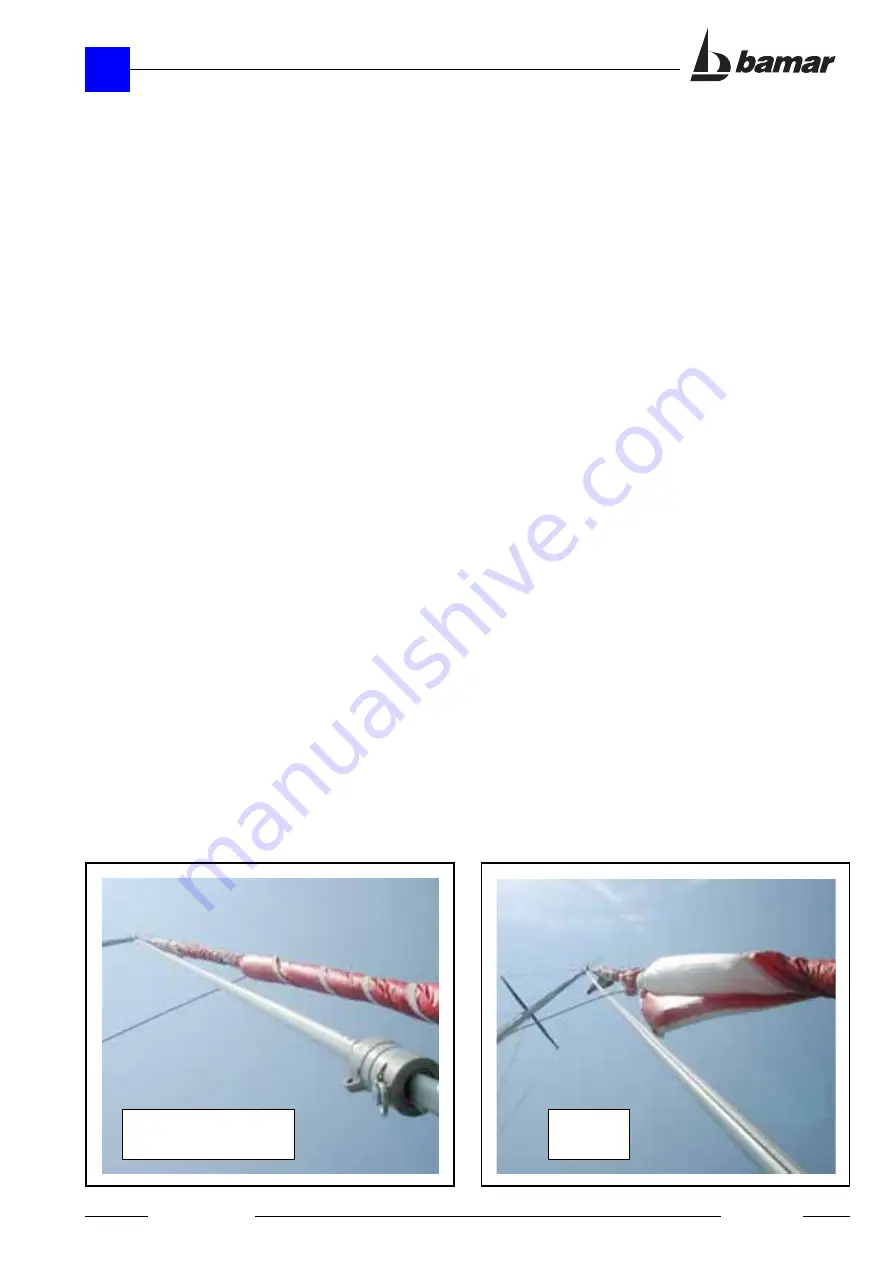
33
Edit. 11.2004
Uso e Manutenzione RollGen - RollGen Use and Maintenance
®
Furling & reefing sail systems
C
ISTRUZIONI DI MONTAGGIO e USO - INSTALLATION and USE
- Distanza dello strallo di RollGen dallo strallo di
prua. E’ importante che lo strallo di RollGen in
posizione di lavoro non appoggi contro lo strallo
di prua (es. il Genoa avvolto sullo strallo), anche
in fase avvolgimento/svolgimento con la sua
naturale “catenaria”. La distanza dallo strallo di
prua dipende dall’altezza dell’uscita della drizza
e dalla posizione del punto di aggancio del tam-
buro di RollGen (testa del bompresso). Più que-
ste quote sono alte, più lo strallo di Rollgen sarà
lontano dallo strallo di prua. E’ importante effet-
tuare le manovre di svolgimento/avvolgimento in
andatura compresa tra 80° e 130° essendo natu-
ralmente agevolati dalla direzione del vento ap-
parente che tende ad allontanare il sistema (strallo
+ vela) dallo strallo di prua. E’ pertanto possibile
installare Rollgen con tali quote molto ridotte (es.
sulla prua senza bompresso), avendo l’accortez-
za di avvolgere e svolgere Rollgen SOLO in
andature nelle quali la naturale pressione del
vento lo allontani dallo strallo di prua, evitando
dannose sovrapposizioni.
-
Non interporre stroppi o prolunghe
tra il cavet-
to del punto di mura o tra penna e grillo girevole.
Il punto di mura della vela deve essere vincolato
direttamente al cavetto
con il grillo a lira in
dotazione, la penna
direttamente al grillo gire-
vole
di testa.
- Il tamburo deve essere installato di modo che
questo
non possa ruotare sul suo asse
. Instal-
larlo il più basso possibile (testa bompresso) con
il grillo a lira in dotazione o con il
moschettone
fisso
a sgancio rapido (optional). Se si desidera
interporre una prolunga e/o un moschettone sot-
to il tamburo, questo deve essere
non girevole
.
SI - YES
NO
- Distance between RollGen stay and forestay. It
is important that when the RollGen stay is in
working position it does not touch the forestay (or
the Genoa furled around the stay), even when
furling and unfurling with its natural catenary.
The distance from the forestay depends on the
height of the exit of the halyard and on the
position of the connection of the RollGen drum
(end of the bowsprit). The higher these measures,
the longer the distance from the forestay. It is
important to carry out the furling/unfurling
operation downwind (between 80° and 130°) as
you will be naturally helped by the direction of the
apparent wind that keeps the system (stay + sail)
off from the forestay. You may therefore install
RollGen with very short distances (e.g. on the
bow without bowsprit), if you make sure to furl
and unfurl RollGen ONLY when the natural
pressure of the wind keeps the system away from
the forestay, thus preventing dangerous overlaps.
-
Do not interpose strops or extensions
between
tack cable or sail head and shackle. The sail tack
has to be connected
directly to the cable
with
the bow shackle supplied; the head of the sail has
to be connected
directly to the bow shackle
on
the halyard swivel.
- Please, make sure the drum
does not rotate on
its axis
. It has to be fitted as low as possible
(bowsprit head) using the bow shackle supplied
or using a
snap shackle
(optional). If you want to
use an extension and/or a snap shackle under
the drum,
it cannot be a swivel system
.
Summary of Contents for ARTE RollGen 08
Page 43: ......












































